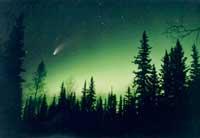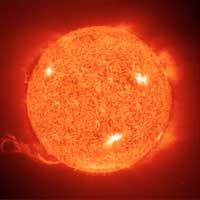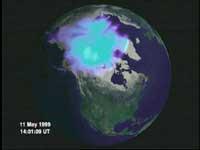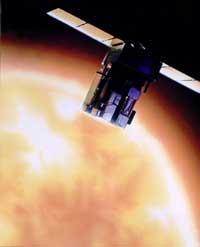Warmer planet, man or sun?

XX. The search for the causes of the rapid warming that the Earth has been suffering since the early twentieth century is the immediate beginning of doubts and discussions. Most say human activity is behind it all: Earth is warming up because we have emitted millions of tons of greenhouse gases into the atmosphere. There has long been talk of the need to take drastic measures. In fact, climate change and controversies have also been mentioned here more than once.
The Earth had already spent several cycles of cooling and heating by the time the man appeared and began consuming fossil fuels. The climate, therefore, has changed earlier for natural reasons. Someone may wonder if what is happening today is not part of one of those natural cycles and will not lack reason. If desired, numerous arguments and works can be found in favor of this hypothesis. But who wants a round response has a party, because the only thing sure is that we are talking about climate change.
In 1988, a group of experts responsible for climate change was formed by the United Nations and the World Meteorological Organization under the name of Integnocturmental Panel on Climate Change (IPCC). The report, published two years later, threw into the atmosphere the gases emitted by man. As the main cause of the warming of the twentieth century. Then the Sun was also examined in search of those responsible, but in the end that reason was dismissed. In 1996, the previous six years were ratified with a second report. It was indicated then that any possible change in radiation from the sun had a much lower influence on the climate than the carbon dioxide emitted by man. A few days ago, physicists from around the world gathered at the Instituto de Astrofísica de las Islas Canarias to discuss the relationship between the solar cycle and the earth's climate.
Changes in the Sun

The data obtained through satellites have shown that, at least in the last two decades, there have been changes in the Sun that have contributed to warming the planet.
If we travel backwards, we can see how Sun fluctuations affect the climate in the short term. XVII. In the eighteenth century, in the so-called minimum period of Maunder, the Sun had very reduced activity and was cold in the northern regions of Europe. XV. In the eighteenth century a similar phenomenon occurred, while in the Middle Ages a period of maximum temperature and activity was known. At that time, of course, there were no satellites to measure the activity of the Sun, but using indirect data and extrapolations, it has been possible to establish a correlation between temperature fluctuations in Europe and solar fluctuations.
These studies were conducted and presented about 25 years ago. Now it's time to know how much of the global warming we live today is caused by the Sun, if you have something to see. For this purpose, the brightness of the Sun, the magnetic field and the spots are mainly studied. More brightness means more light and more light more energy. This is explained in the work presented by researchers of the Swiss Institute of Astronomy (ETHZ) and the Max Planck Institute of Aeronomy (Germany), which during the last three centuries have considerably increased the amount of visible and ultraviolet light emitted by the Sun.

On the other hand, the magnetic field that the Sun exercises on Earth has also doubled in the twentieth century. Throughout the twentieth century. The higher the magnetic field, the lower the amount of charged particles the Earth receives, which seems to negatively affect the formation of clouds, due to the lower formation of clouds in the atmosphere. The chain of phenomena that begins from there causes the final warming of the planet.
All these complex investigations once again reveal the complexity of the terrestrial climate. However, some relevant conclusions have been collected. All data seems to point to XX. The warming of the first half of the twentieth century is mainly due to the Sun and the second half to human activity. Whoever wants to attribute the guilt of climate change to another person, therefore, do not go to the Sun.
Serious consequences Serious consequences
In the same congress John Houghton presented the summary of the third report at the Integnocturmental Panel on Climate Change (IPCC). John Houghton is responsible for the Hardley Centre Meteorology Centre in London. Although the report will be published in 2001, the main contents have already been released. Two will be the main environmental impacts of climate change in the coming years: sea level rise and hydro cycle intensification.

XXI. The report announces that the sea level will be half a meter above by the end of the twentieth century. Bangladesh, the inhabitants of the southern coasts of China and Egypt, the Indian Ocean and several Pacific islands, move and many countries will have to build defenses against water. On the other hand, as the hottest planet is a more humid planet, intense rains will be more frequent but also droughts, drought/flood cycles will be more violent, which, as has already been seen in Africa, will have a special incidence in the subtropical regions.
As for the Sun, it is maintained: Although the influence of the sun on the climate must be taken into account, greenhouse gases are the main causes of the current situation.
Lights of the sky

The auroras are observed around the magnetic poles north and south of the Earth, within the region called oval aurora. This show is due to the solar wind emitted by the Sun, a group of charged particles. Fortunately, the magnetosphere, a zone protected by the Earth's magnetic field, is capable of diverting these particles, since otherwise living on Earth would not be easy. But at the same time it allows us to enjoy the auroras, which occur when the charged particles reach the limits of the magnetosphere. When the particles collide with oxygen at very high altitudes, red auroras occur that when the shock occurs at a lower altitude, the auroras are yellow and green. These last are the ones that look the most. The particles colliding with the nitrogen give blue color. The colors of the edges of the auroras are also of the nitrogen. But it is better to see it than to imagine. For this you just have to approach Iceland, Scandinavia, Alaska or northern Canada, or Antarctica. The most beautiful auroras are seen in winter when the sky is dark, but the equinoxes are not bad approximation times in March and September-October.
Published in the supplement Natura de Gara
Buletina
Bidali zure helbide elektronikoa eta jaso asteroko buletina zure sarrera-ontzian











